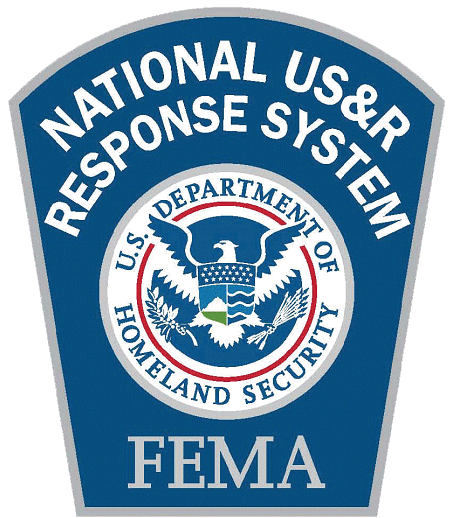FEMA US&R Training and Exercise Information
Operational Readiness Exercise & Evaluation Program
The FEMA National Urban Search and Rescue Response System (System) was established in 1989 and has evolved into a robust national disaster response program with twenty-eight (28) task forces participating from nineteen states. In 2003, the System developed an initial operational readiness self-evaluation process that focused on a task force’s administrative capabilities. This process is the Phase I Self-Evaluation, and is typically reported annually. By 2010, all twenty-eight (28) task forces participated in an on-site evaluation based on standards developed and approved by the System and conducted by their peers and staff from the US&R Program Office. This process is the Phase II OREs.
Since 1992, the System task forces have conducted and continue to conduct individual operational readiness exercises to evaluate their own preparedness. These exercises have ranged from modular type exercises with a limited number of personnel and activities to conducting a full-scale exercise to mobilize a Type 1 task force to perform specific tasks as directed by their organization. Limitations on the type of exercises are generally related to the availability of adequate cooperative agreement funding.
US&R System Exercise Process - Phase III
Operational Readiness Exercise and Evaluation Program (OREEP) – conducted by the National US&R Branch with assistance of task force peer personnel with the goal to have each task force evaluated every three years. Task force’s will be evaluated on five (5) modules.
-
Mobilization
-
Transportation of personnel and cache
-
Establishing a Base of Operations (BoO)
-
Onsite Operations
-
Demobilization
-
The task force develops a three year exercise plan, using HSEEP principles and submits the plan to the National US&R Branch annually adhering to the following guidelines:.
-
Include all five (5) modules – typically anticipated to be one or more modules per year, or
-
Complete all modules during a Deployment Exercise to meet the recommendation in one calendar year.
-
-
A Stafford Act activation of a task force will not take the place of the OREEP however;
-
An outside evaluation completed during a pre-planned activation such as an NLE is acceptable.
-
-
The scheduling, duration, and location of the exercises will be at the task force’s discretion.
-
Each task force will report on their progress with their Training and Exercise Plan in the yearly Phase I Self-Evaluation.
-
The task force will identify an outside observer(s) to be present and evaluate during the exercise.
-
The National US&R Branch holds the right to show up and evaluate the exercise without prior notification..
-
The type of exercise selected by the task force/IST should be consistent with the Task Force’s/IST’s multi-year Training and Exercise Plan.
-
The scenarios used in the exercise must be tailored toward validating the capabilities, and should be based on the task force risk/vulnerability assessment.
-
After Action Reports/Improvement Plans (AAR/IPs) created for exercises must conform to the National US&R template.
-
Draft AAR/IP must be developed based on information from the OREEP Guide Book.
-
Corrective actions are developed from AAR/IP recommendations.
-
All AAR/IP’s will be maintained by the National US&R Branch.
DEFINITIONS
Deployment Exercise – a dynamic exercise taking place over 12+ hours; typically 24 to 72 hours. Generally, such an exercise will be outdoors in various weather environments using collapsed structures, rubble piles, realistic training scenarios (problem injects), and props (e.g. communication systems). It will also involve use of the task force’s equipment cache, transportation assets, involve search and rescue operations, and measure response times from activation until departure. It may involve setting up a Base of Operations or require use of a Type I task force in a collapsed-structure urban environment. The exercise may involve interaction with local, state, regional, federal, or military S&R or incident management authorities. (2010 System Phase I Self-Evaluation, Operational Readiness Criteria, Section 4)
Modular Exercise – a limited exercise, usually less than 12 hours, designed to evaluate the ability of the task force to complete tasks associated with one of the following typical task force operational stages
1) Mobilize, 2) transportation of personnel and cache, 3) establish a BoO, 4) onsite operations, 5) demobilization.
An example would be the System’s Mobilization Exercise required for yearly Phase I Self-Reporting reports:
Mobilization Exercise – a limited exercise, usually less than 12 hours, designed to evaluate a Task Force’s ability to mobilize members and equipment rapidly and efficiently. This type of exercise normally takes place at the task force home location. It involves member call-out notification and check in processing (including medical fitness and completion of all required administrative documentation), and issuance of personal protective equipment to members. It normally involves limited cache assembly, packing, loading, and exercise of the task force’s convoy plan, as well as return to normal operations. (2010 System Phase I Self-Evaluation, Operational Readiness Criteria, Section 4)
